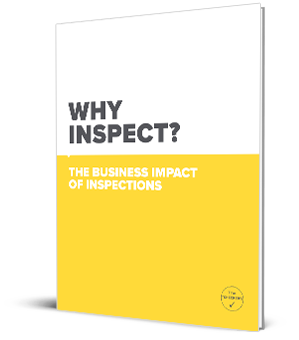Inspections and audits act as the foundation for every safety program out there. They’re how companies can gather the necessary insight to discover potential hazards, equipment malfunctions, improper staff training, or unsafe working conditions, to name a few.
Despite this fact, many organizations look at inspections and audits as a sort of necessary evil, just for the sake of regulatory compliance. Consequently, they often cut corners or turn a blind eye to poor inspection procedures.
The Actual Benefits of a Good Inspection Checklist
When a comprehensive inspection checklist is put together, it will contain all the necessary details for every individual asset. It needs to be simple and easy-to-use in the field but not at the expense of becoming too generic.
When appropriately designed, inspection checklists can be done either on paper or digitally, using mobile devices and cloud-based software. An advantage of a digital checklist is its many functionalities. The Checker Software, for instance, will analyze the data, compile reports, highlight trends, identify long-term inconsistencies, and provide alerts or notifications, among many other things. It will ensure that nothing goes unnoticed or slips through the cracks.
All of these benefits ultimately help a company’s bottom line while supporting the well-being of personnel. A good inspection checklist will be able to:
- Minimize project delays and unproductivity
- Lower maintenance costs
- Reduce recurring problems
- Prevent the use of unsafe assets, thus reducing employee injury
- Discourage the improper or abusive use of assets
- Help determine ideal maintenance schedules
- Maximize scheduling productivity
- Budget for downtime
- Better evaluate asset quality.
Important Aspects of the Checklist Design
It's important to keep in mind that poorly designed inspection checklists will not be taken seriously by staff members. Lists that aren't detailed enough or are not asset-specific are generally viewed as additional paperwork that needs to be done solely for the sake of regulation.
What's more, these inferior inspection checklists will not provide many of the benefits mentioned above. So, when creating a sound inspection checklist, you should make sure to include the following aspects:
- It should include a checkbox for every part of the asset that is essential for its safe and productive use.
- The inspection checklist also needs to clearly state which exact problems will make that asset inoperable, as well as what issues need to be red-flagged for maintenance.
- Checkboxes need to be listed in a logical and intuitive order, thus helping to streamline the inspection process. Listing them in alphabetical order, for instance, will force operators to waste precious time going back and forth searching for the right box to check.
- The overall design of the inspection checklist needs to be simple, easy to read, and easy to understand.
Takeaway
With the Checker Software, you can create your checklist format in accordance with your assets and needs. You will also have access to the many added benefits a digital inspection tool can provide. For more information, visit our website or contact us directly.











